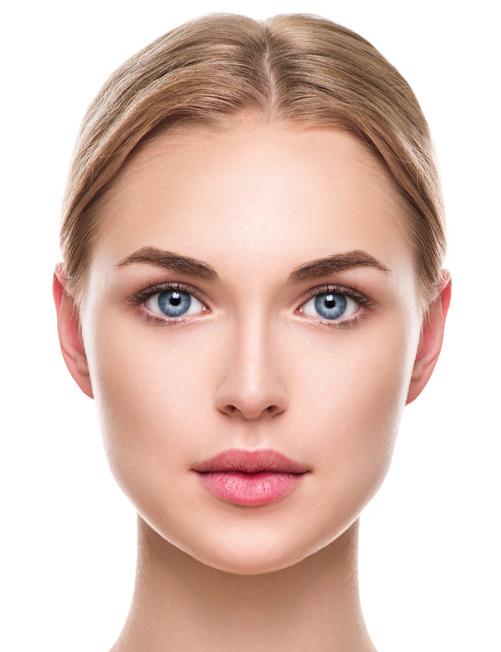@aestheticsgroup
@aestheticsjournaluk
Aesthetics
aestheticsjournal.com
Regulation of skin barrier The skin barrier is a balanced system of many functions localised in the SC. Out of all functions, the epidermal permeability barrier appears to be the most important; genetic defects in the barrier function underlie some common skin diseases such as AD and psoriasis.10 Barrier homeostasis is controlled by a number of factors, discussed below.
Understanding Moisturisers Dr Benjamin Chun-Man Lee explains why and how skin can benefit from moisturisers, listing key factors to look out for when selecting appropriate products for patients Not all moisturisers are the same and they have very different effects on the skin barrier depending on formulation. Effective moisturisers contain bioactive ingredients that strengthen and potentially repair skin barrier homeostasis,1-3 while others can be hydrating without effecting the skin barrier and some have even been found to be damaging. Individuals with impaired skin barrier functions such as atopic dermatitis (AD), also known as eczema, are the most likely to notice the difference; therefore, the choice of moisturiser has significant implications for the treatment and longterm control of dry skin and skin sensitivity. The Eczema Priority Setting Partnership, a collaboration between patients, clinicians and researchers in England and Wales, has set out the priority of identifying the most effective and safe emollients for treating AD, and differentiating moisturising cream based on mechanism of action.4,5
The skin barrier The epidermis is the outer layer of skin which is rich in skin cells, known as keratinocytes, that are arranged in stratified layers. The epidermis is continuously
regenerated by the process of terminal differentiation of keratinocytes, in which plump cells in the basal layer of epidermis multiply, undergoing morphological changes and rise through the layers to the stratum corneum (SC), the outermost layer of the epidermis.6 Lipids are released during terminal differentiation to form the ‘mortar’ into which keratinocytes are laid. Each keratinocyte forms a tough, chemicallyresistant ‘cornified enveloped (CE)’ by cross-linking proteins.7 The epidermis is completely renewed every 28 days.8 The epidermal barrier has many important functions, such as regulating loss of water and electrolytes, antimicrobial barrier and immune protection, skin hydration and moisturisation, protection from chemicals and toxin penetration, as well as acting as a barrier to terrestrial UV radiation and oxidative stress from air pollution.9 The physical skin barrier is mainly localised to the outermost, protein-rich SC, in which keratinocytes adopt a flattened shape enclosed in a cornified cell envelope.9 The epidermal barrier is constantly under threat from the environment. Therefore, it requires full functionality to protect and maintain health of the body.
Skin pH Skin surface pH is maintained in a value between 4.5 and 5.5 (slightly acidic) in humans by the endogenous processes of fatty acids from phospholipids and urocanic acid from natural-moisturising factors (NMF) in SC, as well as exogenous sources of free fatty acids from sweat glands and lactic acid derived from sebaceous glands by the action of bacterial lipase.11 Furthermore, a lot of protein-degrading enzymes (proteases) in SC are pH dependent, activated by alkaline pH to induce desquamation.12 The use of soap can result in a disruption of skin pH, leading to skin barrier dysfunction and ultimately dry skin. Gel formulations on the other hand, which are commonly used and often a preferred choice for oily or acneprone skin types, may raise the skin’s pH, ultimately leading to weakening skin barrier and its innate immunity against infections.13 Doublebase gel is an example of a gelbased moisturiser. Epidermal lipids The studies of skin barrier dysfunction in AD have found insufficient levels of intercellular lipids, in particular ceramide 1 (CER EOS) in AD skin.14 In normal skin, ceramide is synthesised from a particular form of cell membrane phospholipids called sphingomyelin. In AD, upregulation of a converting enzyme that depletes sphingomyelin in turn depletes a reserve of ceramides.15 In recent years, Cork et al. have reported an emollient mixture containing a pseudoceramide, which showed structural resemblance to human intercellular lipids in SC, promoting superior effect on epidermal permeability barrier function in comparison with a control emollient without the additives.1 Niacinamide, also known as vitamin B3, induced up to a five-fold increase in ceramide synthesis by cultured skin cells.16 Environmental and physiological factors The effect of environmental humidity and temperature on skin barrier function is huge. Absolute humidity (AH) is a measure of water content in a given volume of air. AH
Reproduced from Aesthetics | Volume 7/Issue 3 - February 2020













